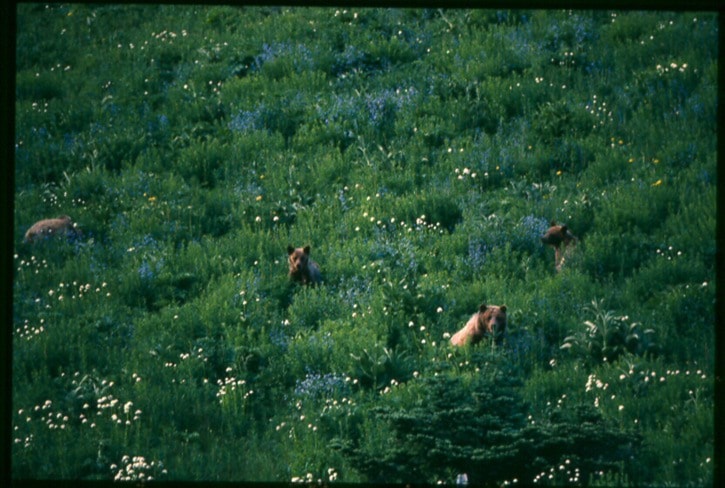Three grizzlies were destroyed in Edgewood recently after killing sheep from a local flock. During the night April 28, the first of the bears got into the sheep’s pen and killed one of the domesticated animals. After finding the sheep’s body the next morning, the flock owner called the Ministry of Environment to report it. Conservation Officers came down that day and set leg hold snares, catching the grizzly the next night.
Because the bear had preyed on livestock, the COs had no choice but to destroy it, said Sergeant Arnold DeBoon, who said the grizzly would have been likely to come back and start killing livestock again even if it were relocated.
“They remember a good meal,” said DeBoon, “It’s a good food opportunity for them.”
DeBoon said the bears, coming down to the valley bottom now that they were out of hibernation, were originally attracted to the area by a dead cow that had been dumped there. It was curiosity as much as the scent of the flock that tempted the grizzlies into their pen, he said. Once there, the bears realized they’d found a meal.
Domesticated animals are easy to kill, which make them prime targets, especially in the spring when the bears are coming out of hibernation and looking for food, said DeBoon. Unfortunately, livestock are like a bag of chips to the bears: it’s hard to eat just one, confirmed the CO.
And unfortunately for the sheep, it wasn’t the end of the bears, either.
The next morning, another sheep was found dead only in the way a grizzly can make it so, another snare was set and another bear was shot. The bodies continued to pile up when a third bear who had killed yet another sheep was destroyed as well.
Within four or five nights, both grizzly and sheep populations in the Edgewood area had suffered sobering losses.
After the third incident, the COs called in Gillian Sanders from the North Kootenay Lake Bear Smart Program to help the hapless shepherd set up electric fencing.
During the same few days, a report of another grizzly that had been seen near an ostrich farm came in. That animal hadn’t killed any livestock, so it was safely captured and relocated far away from any farms.
“People are critical of us when we have to destroy a bear,” said DeBoon, who made it clear shooting bears is one of the last things any Conservation Officer wants to do. “It really disappoints us when we have to destroy a bear,” he said.
Bear Biologist with the Valhalla Wildlife Society Wayne McCrory agreed it was a tragedy, one that may have been avoided. McCrory would like to see improvements in livestock enclosures in these areas.
McCrory is encouraging people down the lake around Edgewood to start a Bear Smart program of its own. Bear Smart has already seen one coordinator help put up over a dozen electric fences in Slocan to help keep bears and livestock out of trouble, he said.
Sergeant DeBoon also stressed the need for people to remove attractants and be vigilant. He reminds people if they see a grizzly to get in contact with the Conservation Officer Service so they can get to the animal before anything happens.
And what happened to the diminished flock of sheep from Edgewood?
“There were still tracks and signs of other bears,” said DeBoon, so the decision was made to move the flock over the water to Fauquier where there hadn’t been any sightings of grizzlies. But the unlucky flock wasn’t made safe from all predators, and yet another sheep was lost to a roaming cougar.
